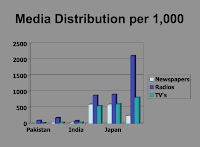This lecture outlines the processes in how we communicate and get through to other people. There've been multiple theories and perspectives that have shaped the field of communication studies. There are different levels of potential communication problems;
Level 1- Technical (Accuracy)
Level 2- Semantic (Precision of language, accents)
Level 3 - Effectiveness (Does the message have the desired outcome)
These concepts about communication are quite new, originating in the 1940's. A problem that's highlighted the importance of efficient communication is when the United States sent two bombs to Japan at the the end of the world war, the reasons for this was said to be a lack of communication with the Japanese government due to language boundaries.
The information or Cybernetic theory of Communication
Shannon and Weaver Bell Laboartories (1999)
As a designer we have to think about what the aspect of the message is along with how we choose our language (not just verbally). As a designer our source are the clients, audiences are constantly changing, along with the break down of categories concerning age. Audience categories: Individuals, adults, men, women, children, housewives.
These are further subdivided by age:
Semiotics- Three basic concepts:
1.Semantics- addresses what a sign stands for
2.Syntactics- is the relationship among signs
3.Pragmatics- studies the practical use and effects of signs
Audience and social class - Theory doesn't work without knowledge of the audience
Media distribution - Newspapers, Radio, TV's, RADIO IS THE HIGHEST AND MOST USED FORM OF COMMUNICATION IN JAPANS SEMIOTICS.
Semiotics; Can be useful when you need to make meaning from a given framework. Breaking down into code.
The phenomenological Tradition; This is the process of knowing through a direct experience, it's the way in which humans come to understand the world. Phenomenon refers to the appearance of an object, event or condition in one’s perception. Makes actual lived experience the basic data of reality.
A failure in communication can be seen as an absence of, or failure to sustain, authentic human relationships
Merleau-Ponty "The theory of the body schema is, implicitly, a theory of perception in which our own body is the world as the heart is the organism: it keeps the visible spectacle constantly alive, it breathes life into it and sustains it inwardly, and with it forms a system. The weakness of Merleau-Ponty’s position is grounded in his attachment to semiotics.
Hermeneutic Phenomenology; Beginning around 100 years ago being taught to Romans, it's originally referred to the study of religious texts.
A hermeneutic circle is a Metaphor, from the Greek word...
"transfer is language that directly compares seemingly unrelated subjects or activities".
The corporeal turn - The embodied mind; communication through visuals and facial features. Communication is seen as an extension of the nervous system. It starts with an awareness of the body. Language is seen as part of that system existing as neuronal pathways that are linked within the brain. The key is a physiological classification of coding and encoding.
Design Context ❏ ❐ ❑ ❒
BA Graphic Design. ♒
You Are Reading
Friday, 6 April 2012
Subscribe to:
Post Comments (Atom)
About Me
Labels
- Collaboration (4)
- Design for print (17)
- Dissertation (7)
- Douwe Egberts (7)
- Fedrigoni (4)
- Feel Good (5)
- Hellfire (2)
- Holistic Therapist (1)
- Ko/Za Law Group LLP (1)
- Mark Webster (2)
- OUGD 402 (1)
- OUGD 501 (29)
- OUGD 502 (1)
- OUGD 503 (25)
- OUGD 504 (34)
- OUGD 601 (12)
- OUGD401 (31)
- OUGD403 (4)
- OUGD404 (3)
- OUGD505 (10)
- Practical (6)
- Print and Web (11)
- The Puffins Childrens Prize (1)
- Threadless (1)
- Web design (4)
- ZoomRadar (1)
Followers
Powered by Blogger.
Copyright 2010. All rights reserved.









No comments:
Post a Comment